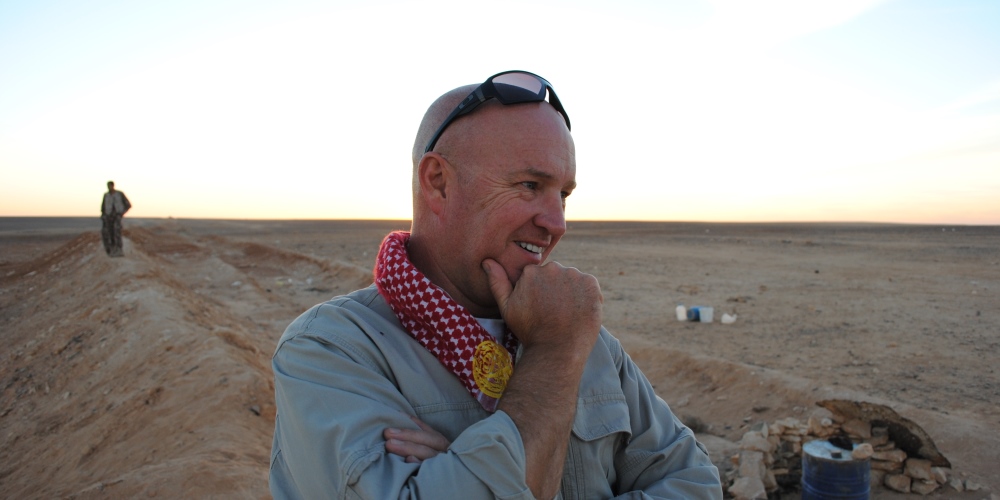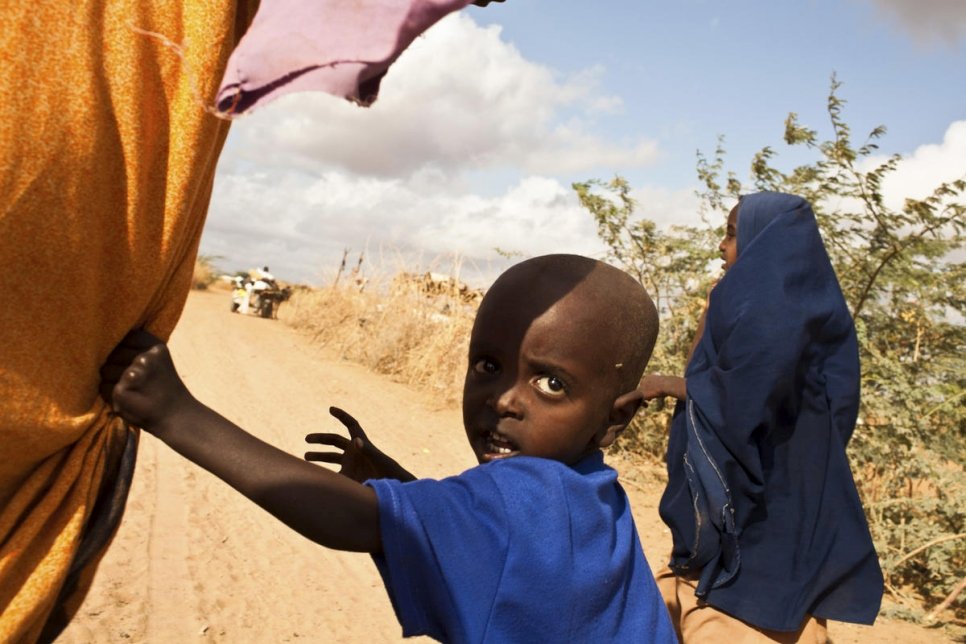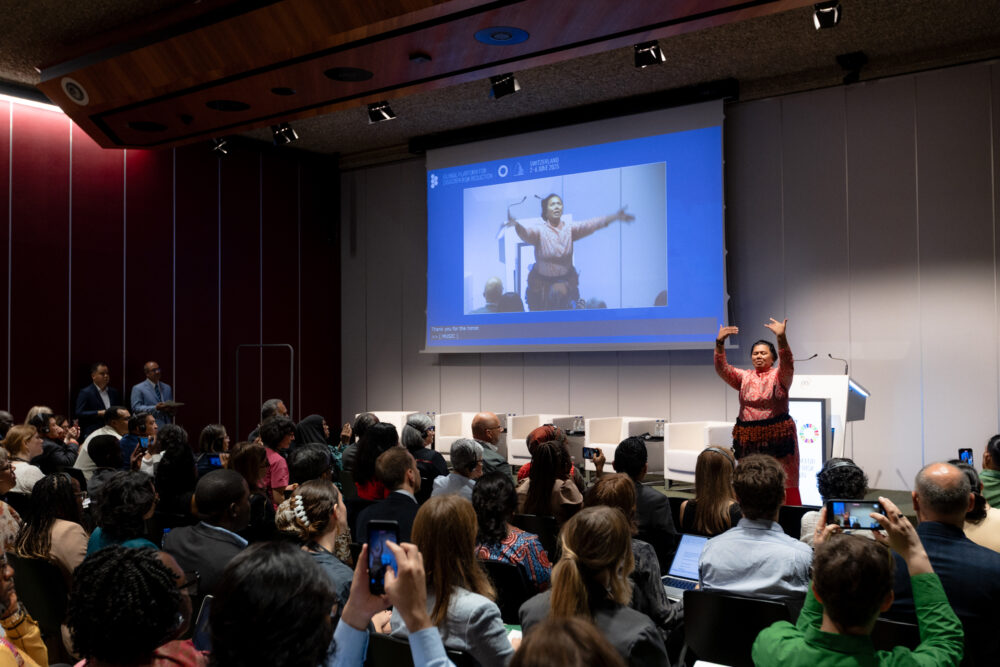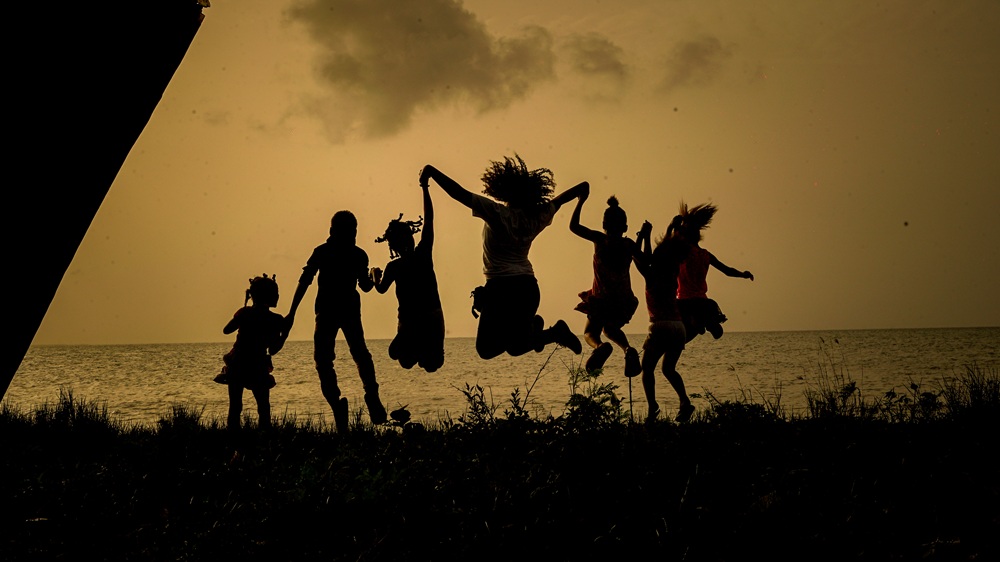“The impacts of climate change and disasters continue to exacerbate situations that force people to flee within their country as well as across international borders.”
The United Nations Refugee Agency (UNHCR) recognizes the linkages between climate change and forced displacement are extremely serious and have far-reaching consequences. The effects of climate change on the forcibly displaced and, in turn, the environmental impact of large displacement crises against the backdrop of the ever-growing climate emergency, require a renewed and strengthened engagement from the UN Refugee Agency. As of 1 January 2020 the United Nations High Commissioner for Refugees (UNHCR) appointed Andrew Harper as Special Advisor on Climate Action, in order to step up UNHCR’s efforts to address the climate emergency and better protect and assist people forcibly displaced by the effects of climate change and disasters. In an exchange with the Secretariat of the Platform on Disaster Displacement (PDD), Mr. Harper shared his perspective, his concerns, his hopes.
PDD Secretariat: How does climate change impact population displacement?
Mr. Andrew Harper: The trends of forced displacement globally are particularly worrying as UNHCR’s report released recently for World Refugee Day shows that in the last 10 years, the number of people forcibly displaced has doubled to almost 80 million people at the end of 2019, with fewer and fewer of those who flee being able to return home. Among them, almost 35 million are refugees, asylum seekers and others displaced outside their country, while the remaining 45 million are internally displaced. We also observe that the impacts of climate change and disasters continue to exacerbate situations that force people to flee within their country as well as across international borders.
With new and detailed data on disaster displacement, the Global Report on Internal Displacement by the IDMC provides us with important and complementary figures. In total, nearly 2,000 disasters triggered 24.9 million new displacements across 140 countries and territories. More than 95 per cent were the result of weather-related (hydro-meteorological) hazards such as storms and floods. Most of the new displacements were recorded in East Asia and the Pacific and in South Asia, as in previous years, and were in the form of government-led pre-emptive evacuations actually saving lives by moving people out of harm’s way when a disaster strikes.
Besides, data indicates that climate-related events increasingly interact with the drivers of displacement and generate new forms of internal movements, outpacing those related to conflict and violence by three times. Climate change remains at the same time a pervasive factor in the context of cross-border displacement. At UNHCR, we see that the interplay between climate change, conflict, hunger, poverty and persecution create increasingly complex emergencies and together with partners, we need to strengthen our data and analysis of the drivers of displacement. We also must remember, that in some situations, the adverse effects of climate change and disasters generate displacement across borders. Some of the affected people may be in need of international protection and this is where UNHCR, IOM and PDD have a particularly important role to play.
PDD Secretariat: How can UNHCR help respond to this challenge?
Mr. Andrew Harper: For several years, UNHCR has worked to clarify the application of international protection frameworks in the context of climate change and disaster displacement when it occurs across borders. We will continue to work on legal and normative developments in this area and provide further guidance on the application of international refugee law and complementary forms of protection, to raise awareness on protection issues in relation to climate change and displacement and to ensure policy coherence including through our engagement with PDD, IOM and other partners and in multilateral fora. UNHCR will also continue to engage and extend partnerships on preparedness and disaster risk reduction.
Moreover, UNHCR has a long experience in responding to internal displacement situations. Its inter-agency commitment to engaging in context of disasters and climate change as per its new IDP Policy, will be of critical importance as climate change over time will trigger more displacement. It is also a key objective for UNHCR to support States, through technical advice, including also through the Global Protection Cluster’s Task Team on Law, in developing and implementing legal and institutional frameworks to prevent, respond to and facilitate solutions for IDPs, for conflict as well as climate and disaster related displacement.
UNHCR and IOM have also developed some guidelines and a Toolbox on Planned Relocation together with Brookings and Georgetown, and we provide support to States upon request on planned relocations to ensure that protection considerations are at the forefront of any needed relocations in the face of climate related risks.
PDD Secretariat: Why is the term “climate refugees” not appropriate for people displaced across borders in the context of disasters and climate change?
Mr. Andrew Harper: The term “climate refugee” is not based on international law. The majority of displacement in the context of climate change and disasters is internal, but people forcibly displaced across international borders in the context of climate change and disasters may fall under the 1951 Refugee Convention or the regional instruments (OAU Convention, Cartagena Declaration) in situations where climate change or disasters interact with conflict or violence. They may also fall under regional refugee instruments in disaster situations capable of «seriously disturbing public order» within the meaning of the expanded refugee definition in these instruments. If eligible to refugee status, these people are then “refugees”, not “climate refugees”.
PDD Secretariat: How can people displaced in the context of disasters and climate change be protected?
 Mr. Andrew Harper: For internal displacement situations, national authorities have the primary duty and responsibility to provide protection and humanitarian assistance to internally displaced persons within their jurisdiction. The Guiding Principles on Internal Displacement set out the international standards of rights and protection applicable to situations of conflict, human rights violations or disasters. The Guiding Principles would apply equally to sudden or slow-onset natural hazards and the adverse effects of climate change, insofar as people are forcibly displaced inside their own country or because their place of origin has become uninhabitable or too dangerous for human habitation. Regionally, the African Union Convention for the Protection and Assistance of Internally Displaced Persons in Africa (also known as the Kampala Convention) in 2009 is a binding convention which outlines detailed responsibilities and duties with respect to IDPs irrespective of the cause of their displacement. Article 5(4) specifically requires actors to protect and assist those internally displaced by disasters, including those displacements triggered by climate change.
Mr. Andrew Harper: For internal displacement situations, national authorities have the primary duty and responsibility to provide protection and humanitarian assistance to internally displaced persons within their jurisdiction. The Guiding Principles on Internal Displacement set out the international standards of rights and protection applicable to situations of conflict, human rights violations or disasters. The Guiding Principles would apply equally to sudden or slow-onset natural hazards and the adverse effects of climate change, insofar as people are forcibly displaced inside their own country or because their place of origin has become uninhabitable or too dangerous for human habitation. Regionally, the African Union Convention for the Protection and Assistance of Internally Displaced Persons in Africa (also known as the Kampala Convention) in 2009 is a binding convention which outlines detailed responsibilities and duties with respect to IDPs irrespective of the cause of their displacement. Article 5(4) specifically requires actors to protect and assist those internally displaced by disasters, including those displacements triggered by climate change.
In some cases, displacement is across borders. Displaced people may then be in need of international protection. Existing international protection frameworks may be applicable in some circumstances. UNHCR is providing guidance on the application of international refugee law in the context of climate change and disaster displacement across borders and is in the process of developing legal considerations regarding claims for international protection made in the context of the adverse effects of climate change and the impacts of disasters.
In both scenarios whether internal or cross-border, where disaster displacement occurs, a strong operational response, guided by protection considerations, is often needed. Here too, UNHCR will continue to work in inter-agency contexts to support governments – building on our strong expertise in emergency responses. The Global Compact on Refugeesadopted by the UN General Assembly in December 2018, calls for preparedness measures and evidence-based forecasting, and the inclusion of refugees in disaster risk reduction strategies.
PDD Secretariat: What does UNHCR do to reduce the environmental impact of large-scale forced displacement crises?
Mr. Andrew Harper: Climate change impacts drive people out of their homes, but large-scale refugee and IDP movements – whether or not climate-induced – have themselves in turn an environmental impact, and refugees and IDPs are frequently located in climate hotspots. I am determined to make these considerations more relevant to the way we prevent, prepare for and respond to displacement crises.
At UNHCR, we have worked for years to reduce the environmental impact of refugee and IDP displacement crises through renewable energy options, reforestation activities, and access to clean fuels and technology for cooking. We have now launched a revitalized energy strategy and are improving our tools to address these challenges. And finally like other organizations, we recognize that our own operational footprint has an environmental impact, and are taking action accordingly. We are working, for example, to increase energy efficiency and renewable energy use, at headquarters and in the field.
PDD Secretariat: What is next for the Climate Action team at UNHCR?
Mr. Andrew Harper: The urgency and scale of the climate crisis require a collaborative and coordinated effort with partner agencies, member states, civil society, affected populations, the private sector, academia, development, and peace and security sectors. Only by working together can we successfully address the climate emergency. UNHCR is therefore developing a Strategic Framework on Climate Action, in a collaborative manner, setting out UNHCR’s overall new ambition, priorities and response to climate change and disaster displacement.
Photo 1: © UNHCR/Brendan Bannon – A Somali mother and her two children walk to a refugee camp at Dadaab, Kenya. The camp is the biggest in the world and has seen an influx of 40,000 new refugees from Somalia since June, 2011.
Photo 2: © UNHCR
Useful Links
Read more about the UN Refugee Agency
Read more about UNHCR, the Environment and Climate Change





